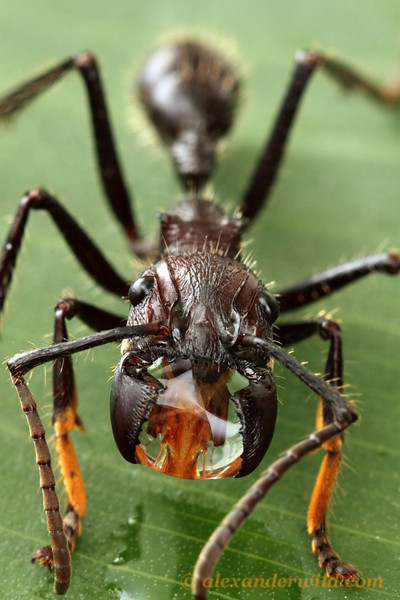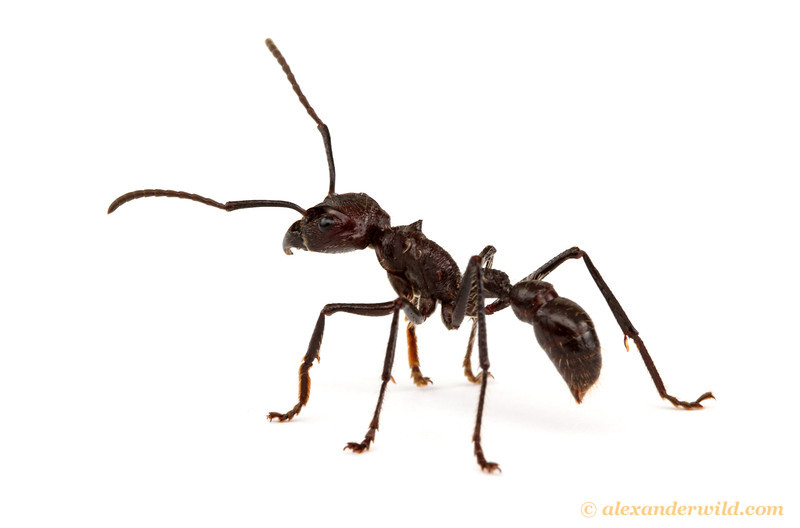
Adaptations in Paraponera clavata
Having been known as the largest ant species, averaging one inch in length, the Bullet Ant has developed many adaptations within their body over time in order to survive. P. clavata have incredibly well developed stingers, which are thought to have evolved in order to protect themselves from any predators that might pose a threat to themselves, their colony, or their nests. Bullet Ants are not very aggressive except when they are defending themselves, or their territory. When the nest of P. clavata is disturbed, the defenders of the colony swarm out, release a very musky odor, and create an audible warning, then grab and often times sting the intruder (Zmuida, 2010). The venom contained within the stinger, poneratoxin, is a neurotoxic peptide that affects the victim's voltage-dependent sodium ion channels and in the process, blocks any synaptic transmissions traveling throughout the central nervous system. Poneratoxin causes an extreme amount of pain within ten minutes of the ant's sting, and causes slow, harsh muscle contractions and a burning sensation. Once an animal or human is stung, they no longer have any control in relaxing or contracting their muscles, and the muscle spasms usually last up to twenty-four hours (Morgan, 2012).
The
Bullet Ant has other adaptations in their body structure, that
are apparent within almost all members of the Insecta class. The
segmented bodies of P. clavata are made of a chitinous
exoskeleton. Three pairs of legs are attached to the mesosoma of
the ant and possess a hooked claw used as an aid to help climb
and hang onto the subterranean trees. The two antennae attached
to the head of the Bullet Ant, are organs that possess many
different functions. Not only can these antennae be used in
detecting chemicals, vibrations, and air currents within their
surrounding environments, but they are used in order to receive
signals through any form of touch (. The head to which these
antennae are attached, possess two strong jaws that are known as
mandibles. These are adaptations to the head region that allow
the ant to carry food, construct nests, and also used as a
defensive mechanism. A very complex compound eye, allows the
ants to be able to detect acute movements in their surroundings.
An interesting feature of the Bullet Ant is a small pocket
located inside their mouths known as the infrabuccal chamber
that stores food so that it may later be passed on to their
larva or even other ants (Morgan, 2012) .
Next check out the Nutrition page of the Bullet Ant, or return Home.

